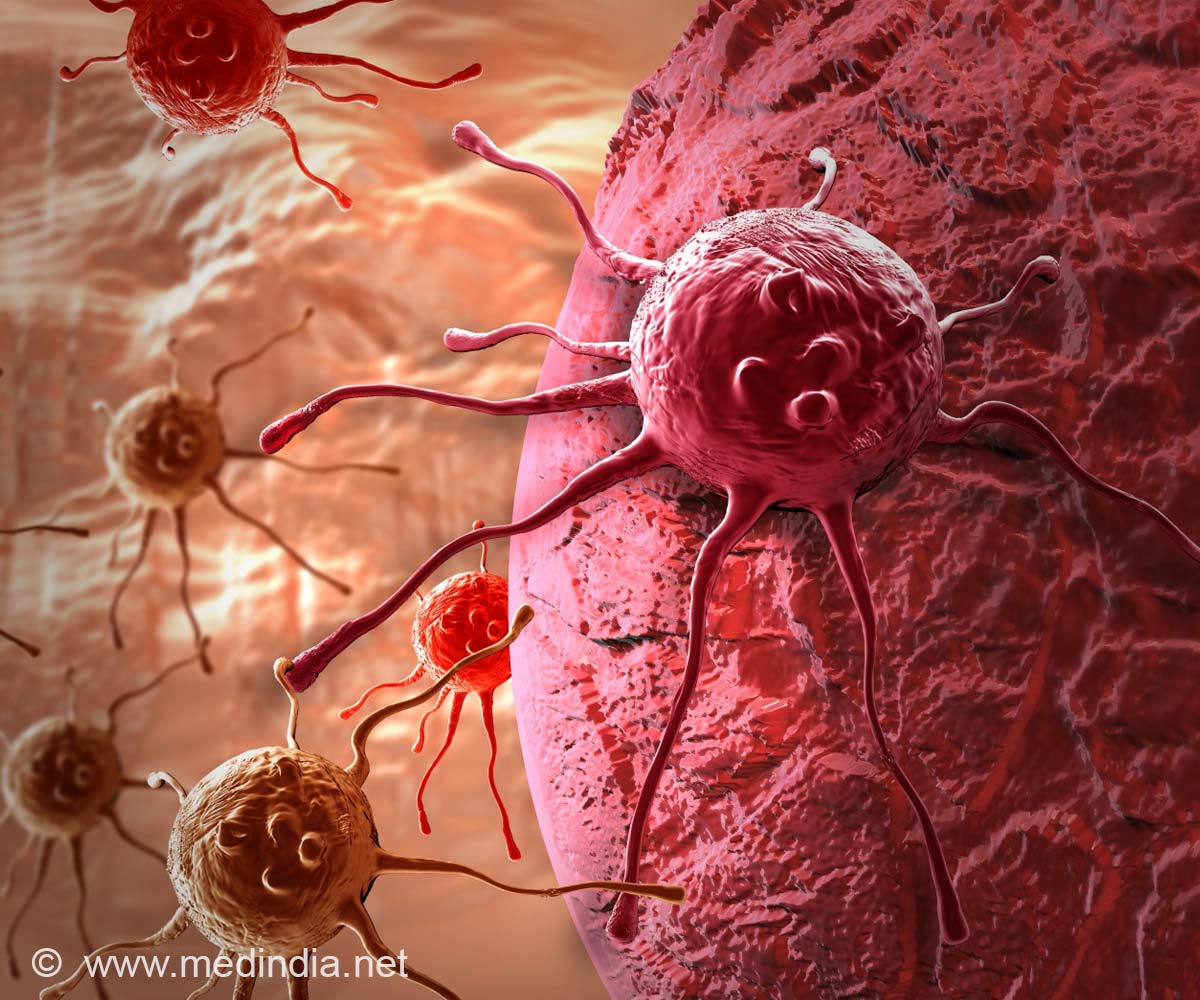Suppressing mutant tumor protein 53 (mtp53) and poly-ADP-Polymerase (PARP) by PARP-inhibiting therapies could be an effective way to interrupt the development of triple negative breast cancer cells.

‘Proteins mtp53 and PARP could serve as markers of breast cancers that would respond to treatment containing drugs Talazoparib and Temozolomide.’
Read More..




The research team found the presence of mtp53 and PARP proteins in a large majority of patients with triple negative breast cancer. Their work suggests the proteins' association and function, and suppressing their interactions could provide a possible target for stopping tumor growth.Read More..
"Our new findings suggest that the presence of both mtp53 and PARP could serve as a good identifier of breast cancers that would respond to combined treatment with talazoparib -- a PARP inhibitor that was developed to treat breast cancers with the BRCA mutation -- and temozolomide -- a chemotherapy agent that is used to treat some brain cancers," said Graduate Center and Hunter College Professor Jill Bargonetti, whose lab conducted the research.
"This is an exciting finding because it could lead to the first targeted therapy for triple negative breast cancer, enabling more precise and effective treatment of a very aggressive form of the disease."
Researchers investigated a variety of breast cancer cell lines, patient-derived xenographs, tissue microarray samples, and data from The Cancer Genome Atlas to tease out the association and interaction between the mtp53 and PARP proteins in triple negative breast cancer.
They discovered that high levels of these proteins are present on replicating DNA in these types of tumors, suggesting that the unusual presence and levels of these proteins may drive tumor growth.
Advertisement
"Our findings that mutant p53 and PARP participate in the DNA replication pathway will provide mechanism-derived dual biomarkers that aid in the diagnosis and treatment of these therapeutically elusive subsets of breast cancer," said Gu Xiao, a research associate with Bargonetti's lab and the paper's first author.
Advertisement
Source-Eurekalert












